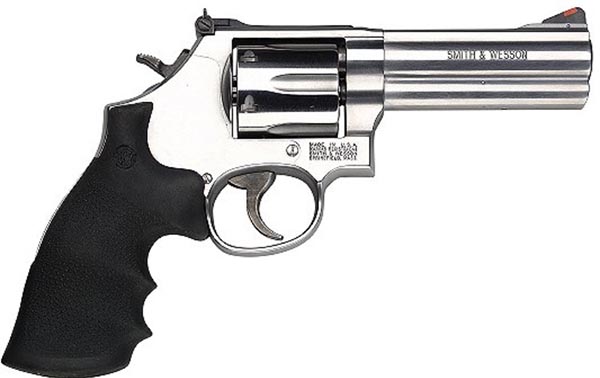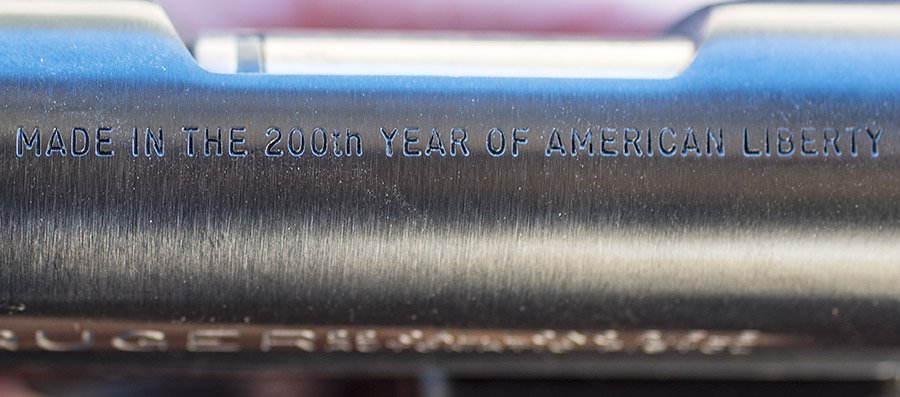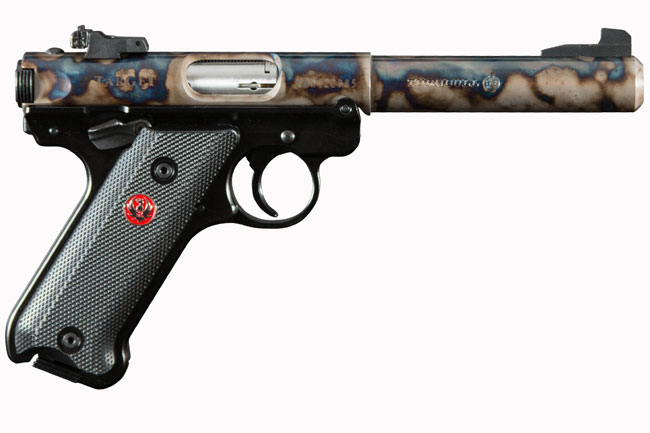The odds are infinitesimally small that I will ever be called upon to overthrow a tyrant. I’m much more likely to be part of the brainwashed mob chasing down the righteous and the truth-tellers. I haven’t bought any guns lately because I don’t want to fit out my broken moral compass with the tools to get the job done. I get the public’s fascination with guns, though, the solid, no rattle feel, the precision machine work, and the black menace that radiates from a well-oiled rod. With a slight nudge to the right I could have become one of those guys that owns 43 guns. Who needs so many guns you say? I would have.
I bought my first gun when I was 20 years old. It was a Ruger bull-barrel .22 caliber target pistol. The thing was a load of fun out on San Diego’s Kitchen Creek road where a self-policed gun range glistened with glass shards in the late 1970s. You could buy milk cartons full of ammunition for the Ruger at department stores or sporting goods retailers. Nine dollars equaled 500 rounds and it made for a cheap, fun day blowing up bottles and cans.
 The Ruger would rust if you didn’t keep it clean and the bottles weren’t shattering enough to suit me so the next gun I bought was a stainless steel Smith and Wesson .357 revolver with a 4-inch barrel. When you pulled the trigger you could see the drum turn, the hammer draw back and flames shoot out the sides of the weapon. It was like a miniature cannon. You got dirty shooting the thing. The whole process of firing the S&W revolver satisfied me on so many levels that at this point I was perilously close to becoming a gun nut.
The Ruger would rust if you didn’t keep it clean and the bottles weren’t shattering enough to suit me so the next gun I bought was a stainless steel Smith and Wesson .357 revolver with a 4-inch barrel. When you pulled the trigger you could see the drum turn, the hammer draw back and flames shoot out the sides of the weapon. It was like a miniature cannon. You got dirty shooting the thing. The whole process of firing the S&W revolver satisfied me on so many levels that at this point I was perilously close to becoming a gun nut.
 For some reason, maybe it was God’s Hand, I didn’t become a gun nut. The trips out to Kitchen Creek became fewer. The ammunition got more expensive and the two pistols were packed away. It was only a few years ago that I dug the guns out. The Ruger was a mess. Rust had scarred its smooth gun-black finish and the mechanism was stuck. It took hours to get the thing cleaned up and the rest of the day to figure out how the various parts fit back into the handgrip. Being stainless, The Smith was fine, only needing a bit of oil to loosen things up.
For some reason, maybe it was God’s Hand, I didn’t become a gun nut. The trips out to Kitchen Creek became fewer. The ammunition got more expensive and the two pistols were packed away. It was only a few years ago that I dug the guns out. The Ruger was a mess. Rust had scarred its smooth gun-black finish and the mechanism was stuck. It took hours to get the thing cleaned up and the rest of the day to figure out how the various parts fit back into the handgrip. Being stainless, The Smith was fine, only needing a bit of oil to loosen things up.
My wife, CT, and I took the guns out to our local range to relearn how they operated. It was kind of fun and it really helped CT to see the difference between an automatic and a revolver. Like me, she prefers the revolver because the works are out in the open. Just by looking you can see the status of a revolver. With an automatic it’s anyone’s guess if the thing is ready to go off or it’s empty.
 This Christmas CT gave me one of those heavy steel spinner targets, the kind with a large round target on the bottom and a smaller one on the top. When you manage to hit the thing the target spins around like a kinetic lawn ornament. I guess CT enjoyed our day at the range more than I did. Now she wants a Mosberg pump shotgun and one of those scary looking assault style rifles. You know, for home protection. It seems like we might end up with a gun nut in the family after all.
This Christmas CT gave me one of those heavy steel spinner targets, the kind with a large round target on the bottom and a smaller one on the top. When you manage to hit the thing the target spins around like a kinetic lawn ornament. I guess CT enjoyed our day at the range more than I did. Now she wants a Mosberg pump shotgun and one of those scary looking assault style rifles. You know, for home protection. It seems like we might end up with a gun nut in the family after all.
Like our gun stuff? Check out Tales of the Gun, our gun page.









